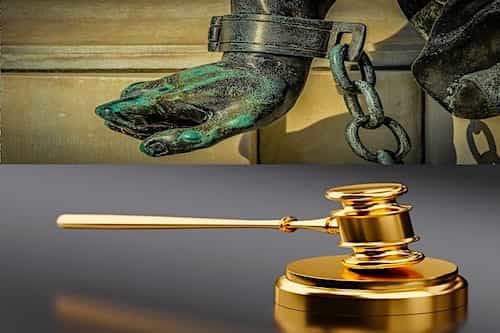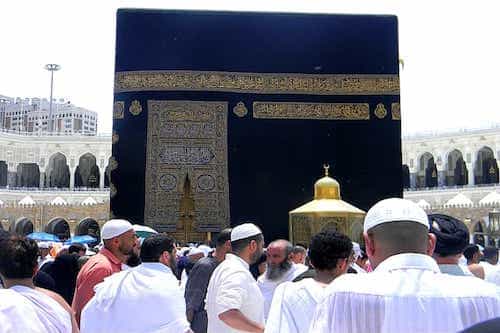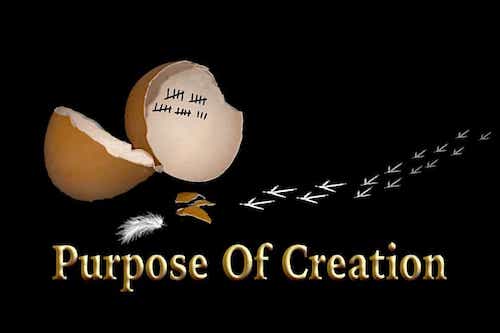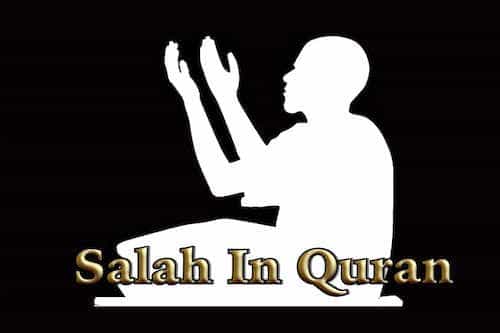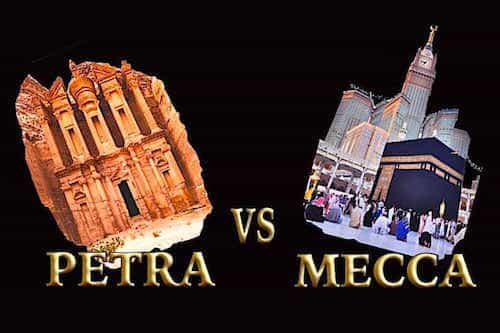The Birth of Pakistan, Iran and Saudi Arabia
Mughals, Safavids, Emirate of Diriyah And The Birth of Pakistan, Iran and Saudi Arabia

Also read Was Abu Talib A Muslim, Root cause of Division, Uthman, Battle of Jamal, Siffin 1, Siffin 2 , Karbala , Umayyads to Ottomans , Major Muslim Empires And Mongols before or in conjunction with this article.
Recitation of the Holy Scripture.
Whoever God guides – he is the rightly guided; and whoever He sends astray – it is those who are the losers.
And We have certainly created for Hell many of the jinn and mankind. They have hearts with which they do not understand, they have eyes with which they do not see, and they have ears with which they do not hear. Those are like livestock; rather, they are more astray. It is they who are the heedless.
And among those We created are people who guide by truth and thereby establish justice.
But those who deny Our signs – We will progressively lead them to destruction from where they do not know.
And I will give them time. Indeed, my plan is firm.
End of Recitation of the Holy Scripture.

O People in this tale of a nation previous program and in part 37 of this dialogue I was telling you a summary of Muslims history after Hussein till today and ended at Mongol Empire’s conversion to Islam.
Timurid Dynasty
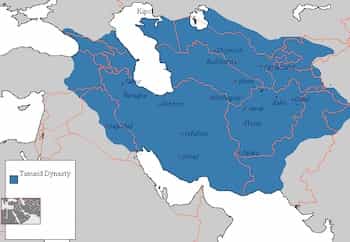
Now let me tell you briefly about Mughals, Safavids and the Emirate of Diriyah and how these ended as the modern-day states of Pakistan, Iran and Saudi Arabia. But before Mughals let me tell you a little about Timurid dynasty, founded by the famous warlord Timur. Who was an official of Chughtai Khanate but he became so powerful that the rulers were just like puppets in his hands. This dynasty also known as Gurkani empire a derived word from the Mongolian language which means son-in-law. As they were in-laws of the line of Genghis Khan founder of the Mongol Empire. Timur defeated and got possession of many states of Ikhannate and Golden Horde and in 1401-1402AD he destroyed Baghdad and defeated the Ottomans in the Battle of Ankara.
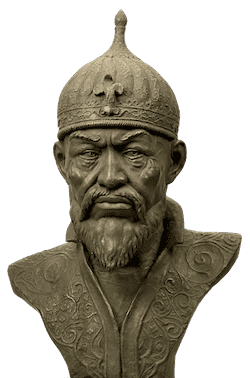
This made Timur the most powerful Muslim ruler of that time which also caused a civil war in Ottoman Empire. The same time he made Samarkand as his capital. Timurids were strongly influenced by Persian culture and ruled over a vast region that included almost the entire modern-day Turkey, the Caucasus (Georgia, Armenia, Azerbaijan), Syria, Iran, Iraq, Central Asia, Afghanistan and Pakistan. This family established two empires, the Timurid Empire 1370–1507 based in Persia and Central Asia and the Mughal Empire 1526–1857 based in the Indian subcontinent. In the 1500s the dynasty lost control over its territories. The western area of Iraq, Persia, Turkey and Caucasus fell to the Shiite Safavid dynasty founded by Shah Ismail I and Central Asia to Muhammad Shaybani after he conquered Herat and Samarkand and founded the Khanate of Bukhara. But the area from Kabul to India came in the hands of Babur a descendant of Timur who later founded the Mughal Empire in 1526AD.
Mughal Empire
From Babur Till Birth Of Pakistan
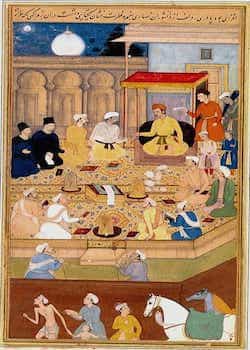
So the Mughal Empire founded in 1526 and lasted till 1857AD except for a 15 years gap from 1540-1555AD in which it took over by Sur Dynasty founded by Sher Shah Suri. The Mughal Empire was founded by Babur who is a descendant from Turco-Mongol blood of Timur from his father side and Chughtai, the son of Gangez Khan from his mother side. He defeated Ibrahim Lodi in the first battle of Panipat in 1526AD. Only first two rulers Babur and Homayoun were pure Central Asian while others were mixed blood due to intermarriages with Persians and Rajputs. Empire extended all of the subcontinent and significant parts of Afghanistan. World’s largest economic power with 25% of World GDP and one of three Islamic Gunpowder empires others being Ottomans and Safavids. The empire saw its peak in the reign of Akbar 1556-1605AD and Jahangir 1605-1627AD. Later in 18th-century empire started losing control due to Marhata insurgencies resulted in the separation of independent states by Nawab of Bengal, the Nawab of Awadh and the Nizam of Hyderabad. Then in 1739 Nader Shah of Iran the founder of the Afsharid dynasty defeated Mughal emperor Muhammad Shah in Battle of Karnal and Delhi was sacked and looted and in lieu of mercy to Muhammad Shah, he took the famous Peacock Throne served as a symbol of Persian imperial might. He also looted the Koh-i-Noor and Darya-ye Noor diamonds.
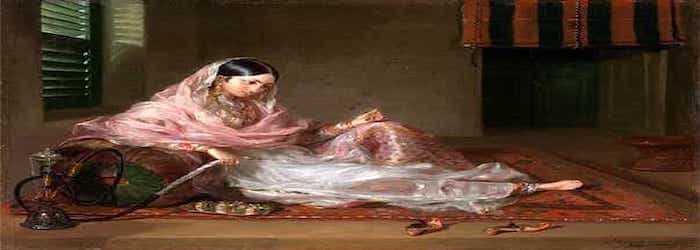
After these incidents, the Mughal empire started shrinking in size and the last ruler, Bahadur Shah II, had control over only the city of Shahjahanabad. Bahadur Shah after defeat in 1857 war was tried by British East India Company for treason and exiled to Rangoon. Thus is the beginning of Britsih Raj in India that started thru the East India company which was established in 1600AD for Trade. Company interests turned from trade to territory during the 18th century as the Mughal Empire started declining in power. But after the end of Mughals in 1857AD British and its Allies faced many wars against Russia and Germany and after World War II Britain started losing controls over its colonies thus in 1947AD and after World War II a new Muslim country Pakistan born in this region of the subcontinent.
Safavid Empire
From Shah Ismail Till Birth Of Iran
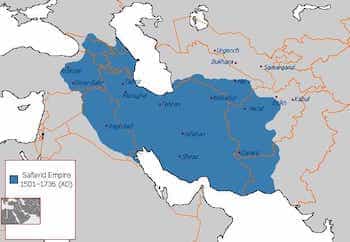
Now let’s turn towards the Safavid empire the Safavid dynasty, founded by Ismail I in 1501 and lasts till 1736AD. Safavid dynasty is one of three Islamic Gunpowder Empires and one of the greatest Iranian Empire after Sasanian Empire that has a native unified Iranian state. It is considered as the beginning of modern Iran history and the first to establish Twelver Shia Islam as the official religion. It originated from the Safaviyya Sufi order from Ardabil Azerbaijan. At its peak under the rule of Shah Abbas-I, it consisted of Armenia, Azerbaijan, eastern Georgia, Iran, Bahrain, parts of the North Caucasus, Iraq, Kuwait, Afghanistan, Turkey, Syria, Pakistan, Turkmenistan and Uzbekistan. With their capital as Tabriz and Isfahan. Safavid Kings claimed to be Seyyeds i.e descendants of the prophet Muhammad. Safavid history begins with the Safaviyya by its founder Safi-ad-din Ardabili (1252–1334) who assumed the leadership of the Zahediyeh Sufi order in Gilan but the order was later known as the Safaviyya due to the great influence of Safi addin. It is the Safavid dynasty rule of Shah Tahmasp 1524–1576AD when Mughal emperor Homayoun threatened and overthrown by his half-brother took refuge in Iran. After that semi heartedly Homayoun converted to Shia Islam in return of that Tahmasp offered Military support and Homyoun went back. Another refugee was Ottoman prince Bayezid. In the last days of Suleman the magnificent, his favorite wife Hurrem Sultan wanted her son Salim to be the next ruler, but he was lazy and alcoholic while her other son Bayezid has superior capabilities. Bayezid because of quarrel with his father took refuge in Iran with Tahmasp.
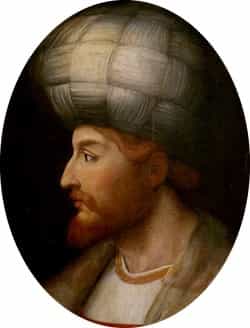
Due to continuous rivalry with Ottoman empire and the rise of Russian Muscovy Empire Safavids decline starts which was postponed for some time by Nader Shah, a military leader of a Vassal Afshar tribe. But later when Nadir Shah himself gained much power, he deposed Shah Tahmasp II then placed infant Abbas III as a puppet ruler and later in 1736AD crowned himself as Shah and thus founded the Afsharid dynasty which ruled for 1736 to 1796AD. After Nader’s death in 1747, Nadir’s assistant Ahmad Shah Abdali had declared his independence by founding the Durrani Empire. Then In 1796AD Mohammad Khan Qajar, took the kingdom and established the Qajar Dynasty the last ruler of which was Ahmad Shah Qajar who lost his power by the military coup of Reza Shah Pehlvi in 1921 with aide and advice of British commander in the region. Then in 1923AD Reza selected as Iran’s prime minister by the National assembly of Iran and later by constitutional amendment became legal Monarch of Iran in 1925 and founded Pehlvis Dynasty which lasted until 1979 when Khomeini disposed of his son Muhammad Reza Shah Pehlvi and the 2500 years old Iranian Monarch came to an end by Iranian Islamic revolution of Khomeini. And thus is the birth of the modern-day Islamic Republic of Iran.
Recitation of the Holy Scripture.
So when they forgot that by which they had been reminded, We opened to them the doors of every [good] thing until, when they rejoiced in that which they were given, We seized them suddenly, and they were [then] in despair.
So the people that committed wrong were eliminated. And praise to God, Lord of the worlds.
Say, “Have you considered: if God should take away your hearing and your sight and set a seal upon your hearts, which deity other than God could bring them [back] to you?” Look how we diversify the verses; then they [still] turn away.
Say, “Have you considered: if the punishment of God should come to you unexpectedly or manifestly, will any be destroyed but the wrongdoing people?”
And We send not the messengers except as bringers of good tidings and warners. So whoever believes and reforms – there will be no fear concerning them, nor will they grieve.
But those who deny Our verses – the punishment will touch them for their defiant disobedience.
End of Recitation of the Holy Scripture.
Kingdom Of Saudi Arabia
Recitation of the Holy Scripture.
O mankind, fear your Lord. Indeed, the quake of the final Hour is a terrible thing.
On the Day you see it every nursing mother will be distracted from that she was nursing, and every pregnant woman will abort her pregnancy, and you will see the people appearing intoxicated while they are not intoxicated; but the punishment of God is severe.
That is because God is the Truth and because He gives life to the dead and because He is over all things competent.
End of Recitation of the Holy Scripture.
O People in this tale of a nation previous program and in part 38 of this dialogue I was telling you a summary of Muslims history after Hussein till today and ended at Safavid and Qajar dynasties and the birth of modern-day Islamic Republic of Iran.
History Of The House Of Saud
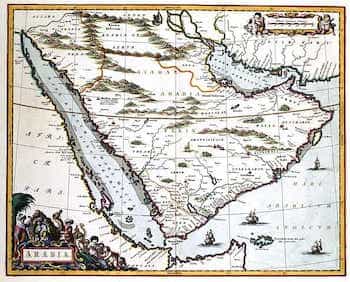
Now let’s turn from Iran to Arabian Peninsula which consisted of four distinct regions Hejaz, Najd, parts of Eastern Area Al-Ahsa and Southern part Asir. From 10th to early 20th century the Muslim Holy sites were under control of Sharifs of Mecca. In Arabic Sharif means noble and was used for the descendants of Prophet Muhammad through his grandson Hassan. Throughout the reigns of Abbasids, Fatimids, Ayyubids, Mamluk and Ottoman they were given charge of holy sites for making sure the safety of Pilgrims. Sharifate came to an end when Hussein bin Ali with the support of Britain after Arab revolt of 1916 rebelled against Ottomans and later After British rise and Ottoman defeat in WW 1 he declared himself Caliph of all Arabs. British make new settlements states and granted Iraq and Transjordan to his son Faisal and Abdullah. Hussein also gives his caliphate to his sons Ali bin Hussein who was the last Grand Sherif who soon in 1925 overthrown and expelled by Ibn Saud and thus founded Saudi Arabia.
Emirate Of Diriyah
Muhammad bin Saud & Muhammad bin Abd al Wahhab
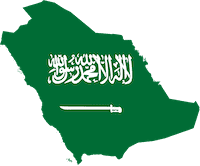
So the modern day Saudi Arabia was founded in 1932 by Abdulaziz s/o Abdul Rahman s/o Faisal s/o Turki s/o Abdullah s/o Muhammad Al Saud. Known as Abdulaziz or Ibn Saud. But all started from Nejd in 1744AD when the great great grandfather of Abdulaziz, Muhammad bin Saud joined hands with Muhammad bin Abd al Wahhab, a religious leader of Sunni Islam and founder of the Wahabi movement. Who motivated people for Jihad and to join Al Saud’s army. Following the teachings of Ibn Taymiyyah, he believed only in fundamentals of the Quran, the Sunna, and the Hanbali school’s legal positions. And condemned practices such as veneration of the graves, holy figures and Imams as esp by Shias. Thus established the first Saudi state the Emirate of Diriyah in 1744AD to give a central place to this movement and to unify the many states of the Arab and free it from Ottoman rule. Muhammad bin Saud and Muhammad ibn Abd al-Wahhab additionally concrete the relationship by marrying their children. Muhammad bin Saud’s son Abdul-Aziz- with the daughter of Muhammad ibn Abd al-Wahhab.
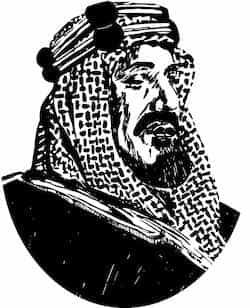
After the death of Muhammad bin Saud in 1765AD and Muhammad bin Abd Al Wahhab death in 1792, Abdul Aziz Bin Muhammad who was the 2nd ruler of First Saudi estate marched against Ottomans and sacked Karbala. In 1802AD he attacked the city of Karbala with 12,000 Wahhabis from Najd some historian says at the anniversary of Ghadir Khum event, and some say on 10th of Muharram. The small Ottoman army escaped and they plundered the tomb of Hussein, killed almost 5000 people and returned back with large spoils, gold and coins. Some historian says that included the Nadir Shah treasure which he looted from Delhi. This attack gave extremism a somewhat intellectual credibility in the Sunni thoughts of some fractions. In 1803AD Abdulaziz’s son, Saud captured Mecca and Madina. After seeing this Ottoman empire decided to halt it and sent their viceroy of Egypt, Muhammad Ali Pasha and in Ottoman-Saudi War of 1818 AD all were captured and the Ruler Abdullah bin Saud was sent to Ottoman capital Constantinople and executed.
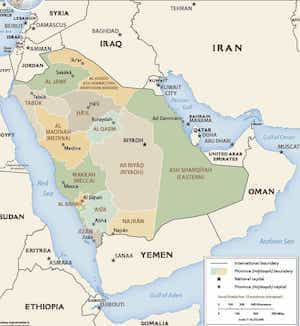
In1824 a very small second Saudi state was again established in Nejd. And for coming 60-70 years they kept fighting with another ruling family of Arabia AL Rashid who became victorious in 1891 and Al Saud were exiled to Qatar and Kuwait. In 1902AD Abdulaziz bin Abul Rahman was back in Nejd by capturing Riyadh with the help of Ikhwan a tribal army inspired by Wahhabism and led by Faisal Al-Duwaish. Later a part of Ikhwan with some modifications became the Saudi Arabian National Guard SANG also known as The White. During World War I with the help of British agent, Captain William Shakespear Abdulaziz entered into the Treaty of Darin in 1915 which made the lands of the House of Saud a British protectorate and in return, Abdulaziz pledged to fight Al Rashid and Ottomans. Previously Britain was negotiating with Sharif Hussein bin Ali by T. E. Lawrence famous as Lawrence of Arabia. Later in 1927AD after Abdulaziz capture of Mecca, the treaty of Darin superseded by the Jeddah conference in which Ibn Saud got new extensions of Saudi Arabs boundaries as well as Weapons and a tribute of Sterling 5000 per month.
Modern Day Saudi Arabia

Ibn Saud avoided involvement in the Arab Revolt of Sharif of Mecca kept himself focused on Al Rashids, defeated them and became the Sultan of Nejd in1921. And later in 1925 with the help of Ikhwan also captured Hejaz. Soon he faced challenges from Ikwan’s side as they want to promote their belief outside of Arab while Abdulaziz did not want any conflict with Britain so the Ikhwan turned against him and in 1929 in Battle of Sabilla Ikhwan were defeated and most of their leaders killed. In 1932AD Abdulaziz united two states of Hejaz and Nejd and founded the modern Kingdom of Saudi Arabia.
Recitation of the Holy Scripture.
This is the Book in which there is no doubt, a guidance for those who have Fears: who believe in the unseen, and who establish Prayer, and spend out of what we have provided for them.
So have they not traveled through the earth and have hearts by which to reason and ears by which to hear? For indeed, it is not eyes that are blinded, but blinded are the hearts which are within the breasts.
And they urge you to hasten the punishment. But God will never fail in His promise. And indeed, a day with your Lord is like a thousand years of those which you count.
Will come soon!
Will come soon!
Will come soon!
Share this article
Written by : TheLastDialogue
A Synthesis of Religions. O Mankind I am presenting you the case of God,, يا أيّها الجنس البشري؛أنا أقدم لكم "قضية الله, ¡Oh humanidad! Les estoy presentando el caso de Dios, O люди, я представляю вам дело Божие, ای بشر من سخنان خدا را به تو عرضه می کنم., Ey insanlık, ben sana Tanrı'nın davasını sunuyorum, 哦人类,我向你展示上帝的情形, اے بنی نوع انسان میں آپ کے سامنے خدا کا مقدمہ رکھتا ہوں
"The Last Dialogue" is an individual's effort by the Will of his Lord to make this world a better living place, to raise the human intellect for the fulfillment of God’s Will and to invoke God’s Mercy on humans.
The Last Dialogue (thelastdialogue.org) stands as a testament to human understanding, held in high esteem and frequently cited across prominent platforms such as Wikipedia, Reddit, and Quora. Its profound significance is evidenced by the multitude of citations and mentions it garners from scholars spanning various faith traditions, including Judaism, Christianity, and Islam.
It distinguishes itself as the sole religious platform adhering to the noble tradition of not soliciting charity, zakat, or donations – a practice aligned with the true Sunnah of Prophets.
قُلْ مَا أَسْأَلُكُمْ عَلَيْهِ مِنْ أَجْرٍ وَمَا أَنَا مِنَ الْمُتَكَلِّفِينَ
Say, "I do not ask you for this any payment, and I am not of the pretentious.



